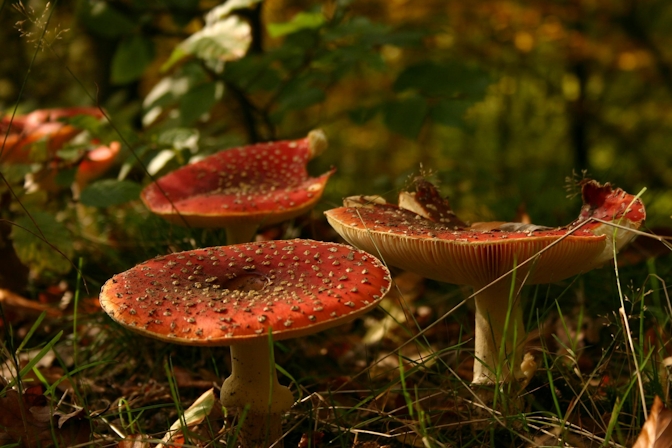
A Look Inside The Current Psychedelic Market: History, Market, And Medical Use
Exploring the multifaceted landscape of the current psychedelic market.
Gone are the days when psychedelics were mere echoes of the ‘60s counterculture. They’re at the heart of a medical revolution, with a market gearing up to hit $7.1 billion by 2032.
In this exploration, we’ll delve into the current and future landscapes of the psychedelic market. We’re spotlighting key players, market trends, and the role of substances like ketamine and psilocybin in pioneering mental health research. Get ready to unravel how these once fringe elements are leading a transformative wave in healthcare.
A Brief Historical Context
For millennia, indigenous cultures have harnessed the power of natural psychedelic plants and fungi for healing and spiritual purposes.
1938 saw the first synthetic psychedelic substance, LSD-25, synthesized by a Sandoz Laboratories chemist, Albert Hofmann. The compound was set aside until 1943, when Hofmann decided to work with it again, accidentally absorbing around 20 micrograms of LSD-25 into his skin, unknowingly kick-starting a scientific odyssey.
The ’50s and ’60s saw a bloom in psychedelic research and cultural integration. Then came a slowdown as psychedelics became classified as Schedule I substances under government regulations, indicating a high potential for abuse and limited medical use, despite psychedelics showing real therapeutic promise with manageable risks.
Now, we’re finding ourselves in a true psychedelic renaissance. Research is back, bigger and bolder, with groundbreaking studies making waves in treating diverse conditions, from post-traumatic stress disorder (PTSD) to chronic pain. And as Western science plays catch-up,
we unveil how these substances can unlock spiritual depths, boost creativity, and even tweak our nervous systems.
It’s clear: psychedelics aren’t just a chapter in human history; they’re a recurring theme. And this time around, a theme with a monstrous market.
Current State Of The Psychedelic Market
The psychedelic drug market is predominantly led by North America, with the United States playing a pivotal role. Across the Atlantic, Europe also contributes significantly to the market, with Germany being a major player. The Asia-Pacific region, encompassing South Korea, Japan, China, and India, is rapidly emerging as a key area for market expansion.
Market Growth
According to Acumen Research and Consulting, the global psychedelic market accounted for $2.6 billion USD in 2022 and is projected to grow to $7.1 billion by 2032, with a compound annual growth rate of 10.9%, signifying the market’s dynamic expansion.
Key companies influencing the global psychedelic market include:
- COMPASS
- Cybin Corp.
- Entheon Biomedical Corp.
- F. Hoffmann-La Roche Ltd.
- Hikma Pharmaceuticals PLC
- Jazz Pharmaceuticals
- Janssen Global Services
- LLC
- Pfizer Inc.
- PharmaTher Holdings Ltd.
- Usonainstitute.org
Popular Psychedelic Drugs: Natural Vs Synthetic

The psychedelic drug market is a dance of natural and synthetic substances.
On one side, natural psychedelics like psilocybin from magic mushrooms and DMT (N, N-dimethyltryptamine) from various plants have been part of human culture for ages. Rooted in the traditions of indigenous and ancient societies worldwide, these substances have carved their niche in spiritual and medicinal practices. Recently, they’ve made waves in clinical trials for treating conditions such as depression, anxiety, PTSD, and addiction.
Conversely, synthetic psychedelics like LSD (lysergic acid diethylamide) and MDMA (3,4-methylenedioxymethamphetamine) are the new lab-born kids on the block, offering a more predictable and consistent experience. Despite lacking the historical charm of their natural counterparts, synthetic psychedelic substances have shown promise in trials for mental health-related conditions.
Market-wise, natural substances like psilocybin and ketamine are leading in revenue, but synthetics like LSD are catching up fast, showing significant growth. It’s a market of contrasts, where ancient wisdom meets modern science, each offering a distinct journey into the mind.
Distribution Channels
Psychedelic substances are distributed through various channels, including hospital pharmacies, retail pharmacies, online pharmacies, and some illegal online stores. Hospital pharmacies are currently predicted to be the major distribution channel, playing a crucial role in the accessibility of these substances.
Therapeutic Application
The therapeutic potential of various psychedelic drugs is being explored through clinical trials. These include:
- Psilocybin for anxiety, depression, and PTSD
- Ketamine for treatment-resistant depression and cluster headaches
- LSD for anxiety, depression, and addiction
- MDMA for PTSD
- DMT for depression
The route of administration is tailored to the specific psychedelic and therapeutic need, with options ranging from oral to injectable forms, depending on the desired immediacy of effects and patient convenience.
Where Do Psychedelics Go From Here?
Looking ahead, the trajectory of psychedelics is poised for significant change. In the U.S., despite federal classification as Schedule I substances, local initiatives in places like Santa Cruz and Washington, D.C., are pushing for decriminalization and legal therapeutic use.
Echoing cannabis’s path, U.S. states are increasingly moving towards legalization, signaling a potential surge in market value by 2033-2037. This evolving legal and research landscape points to psychedelics becoming integral in mainstream medicine, revolutionizing mental health treatment and fueling market growth. We’re not just revisiting history; we’re stepping into a new era of mental wellness and market expansion.
Herb Recommended Products:










